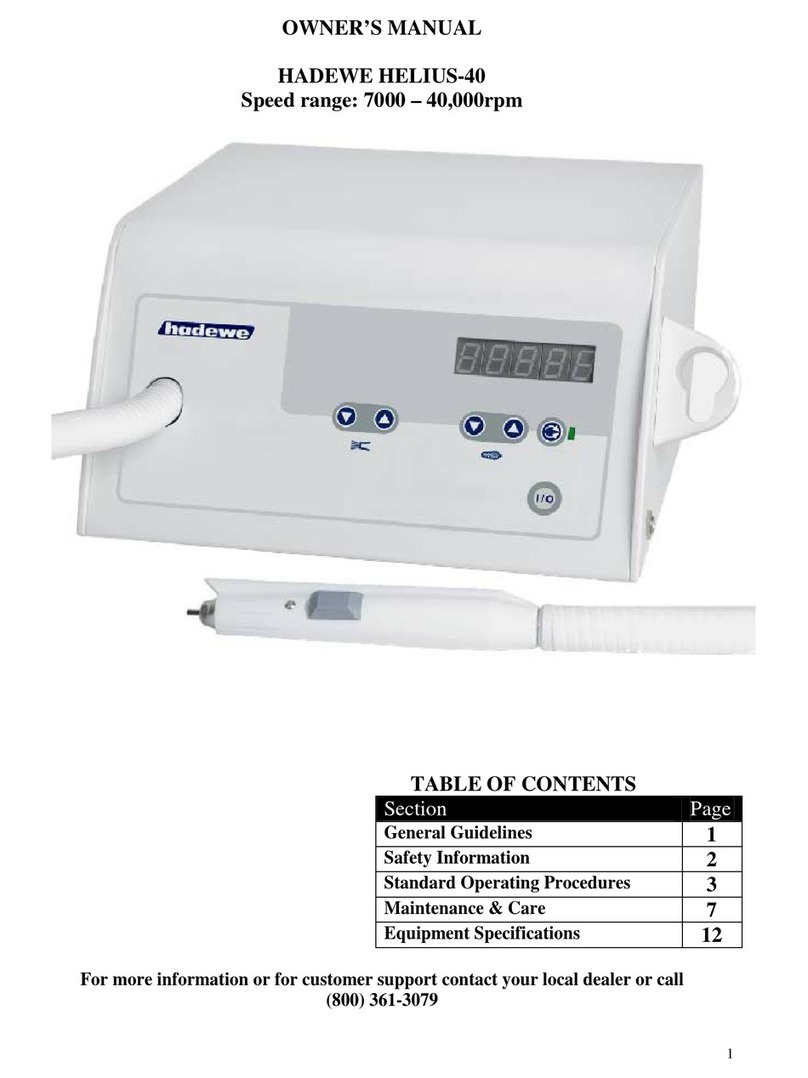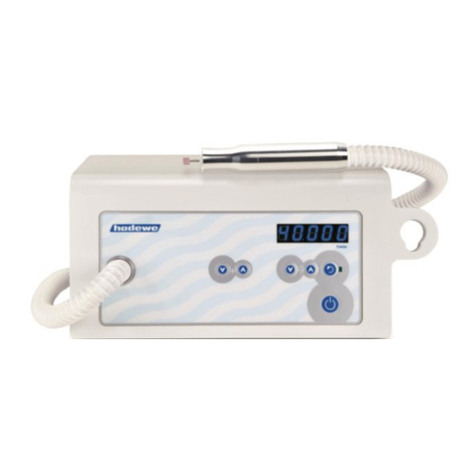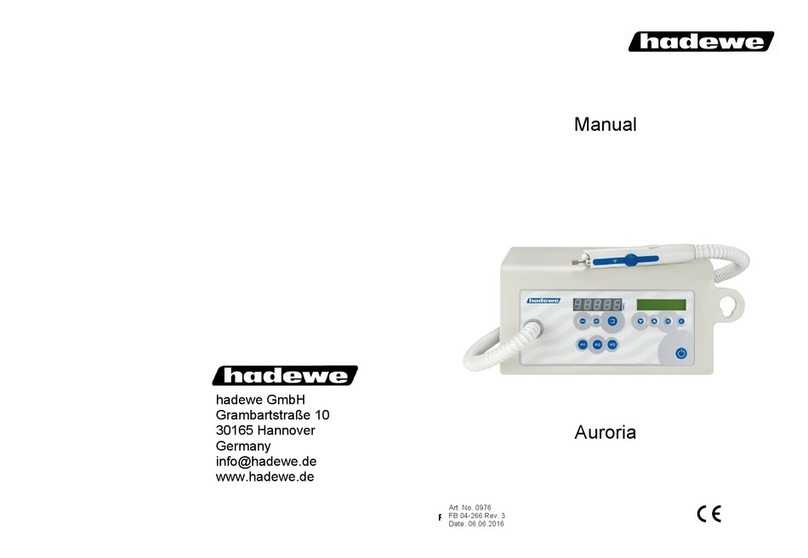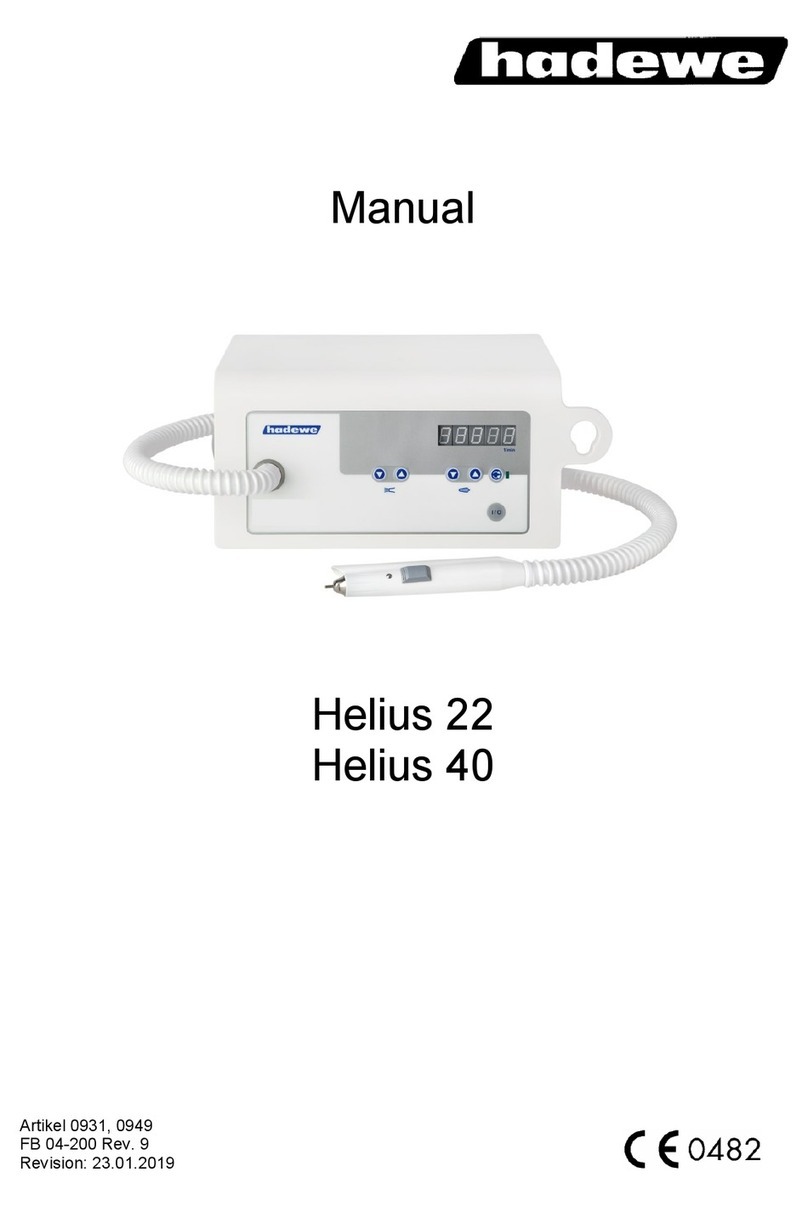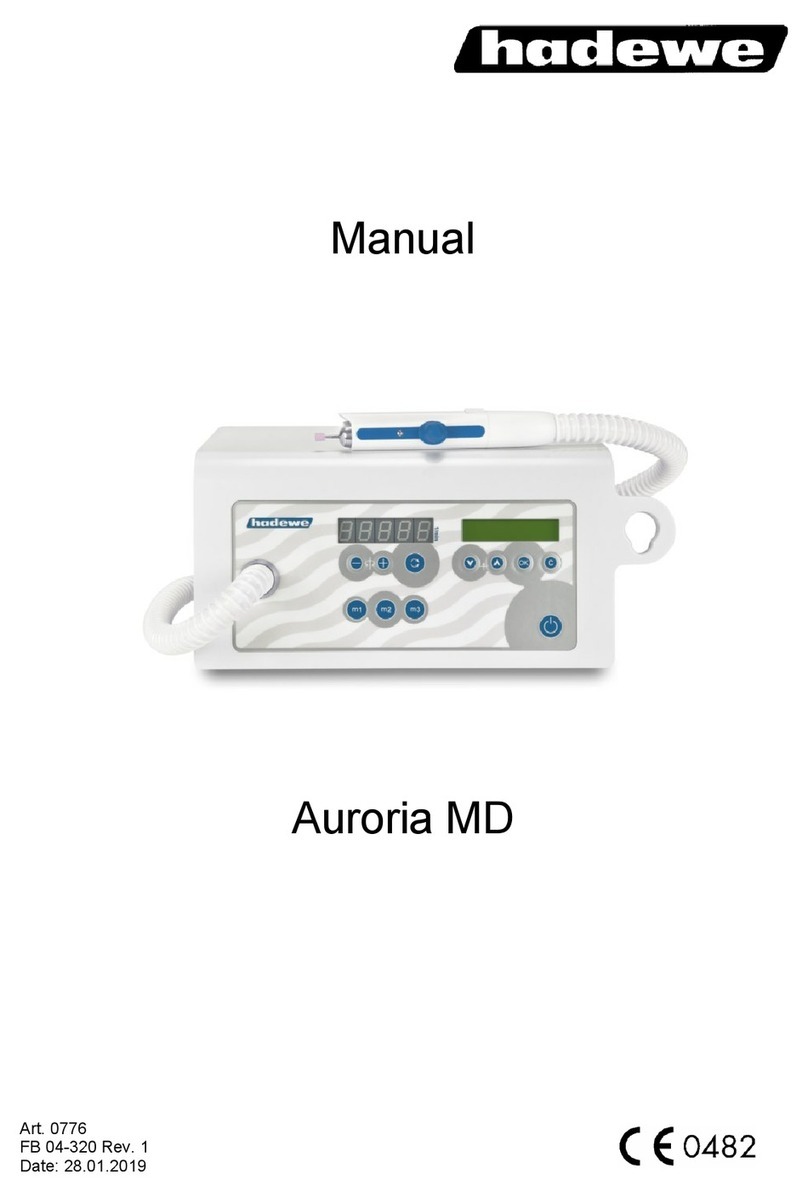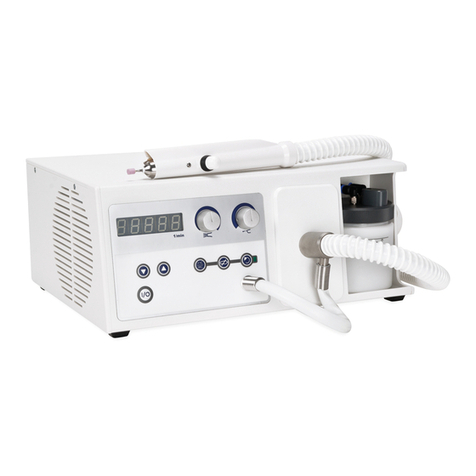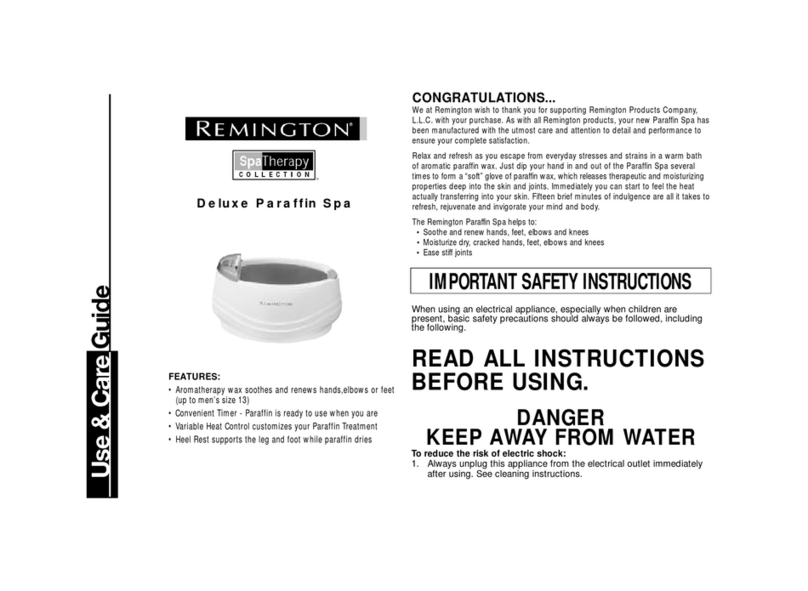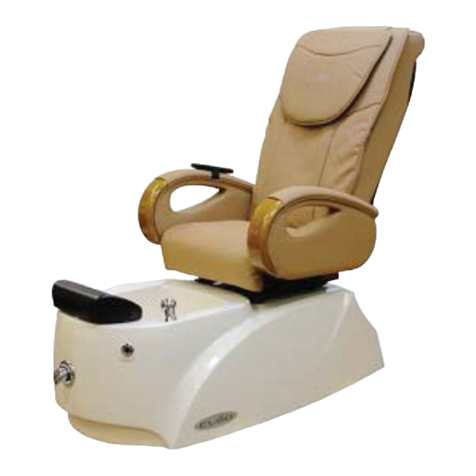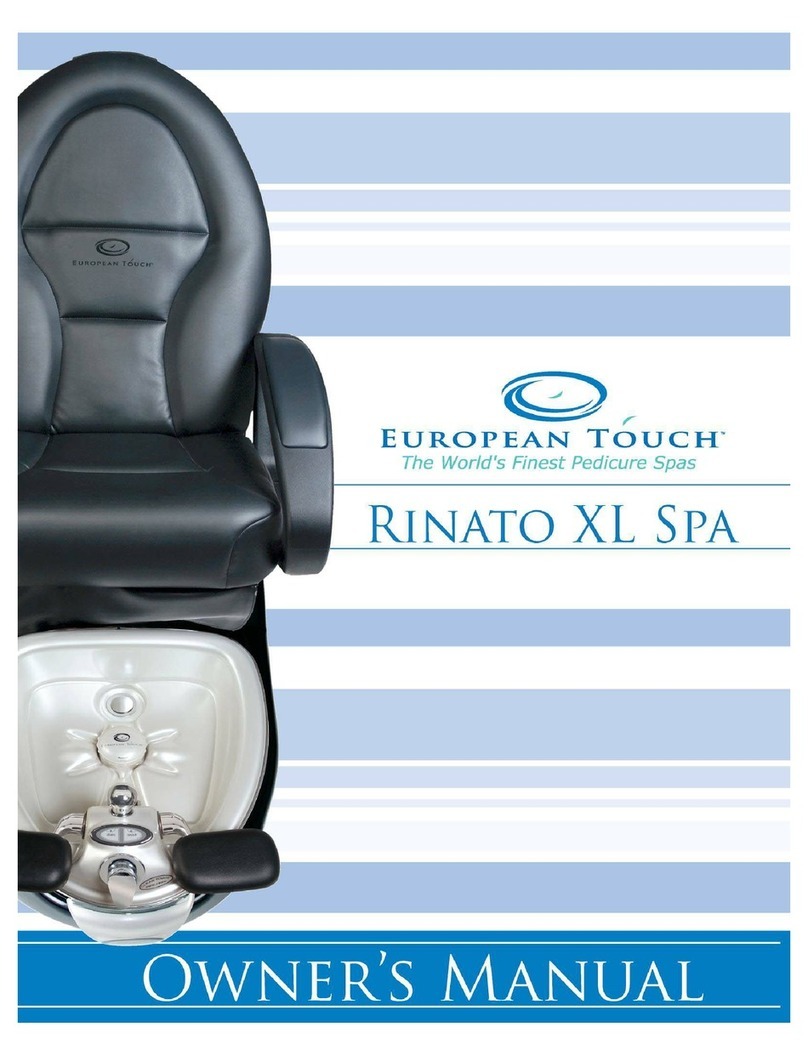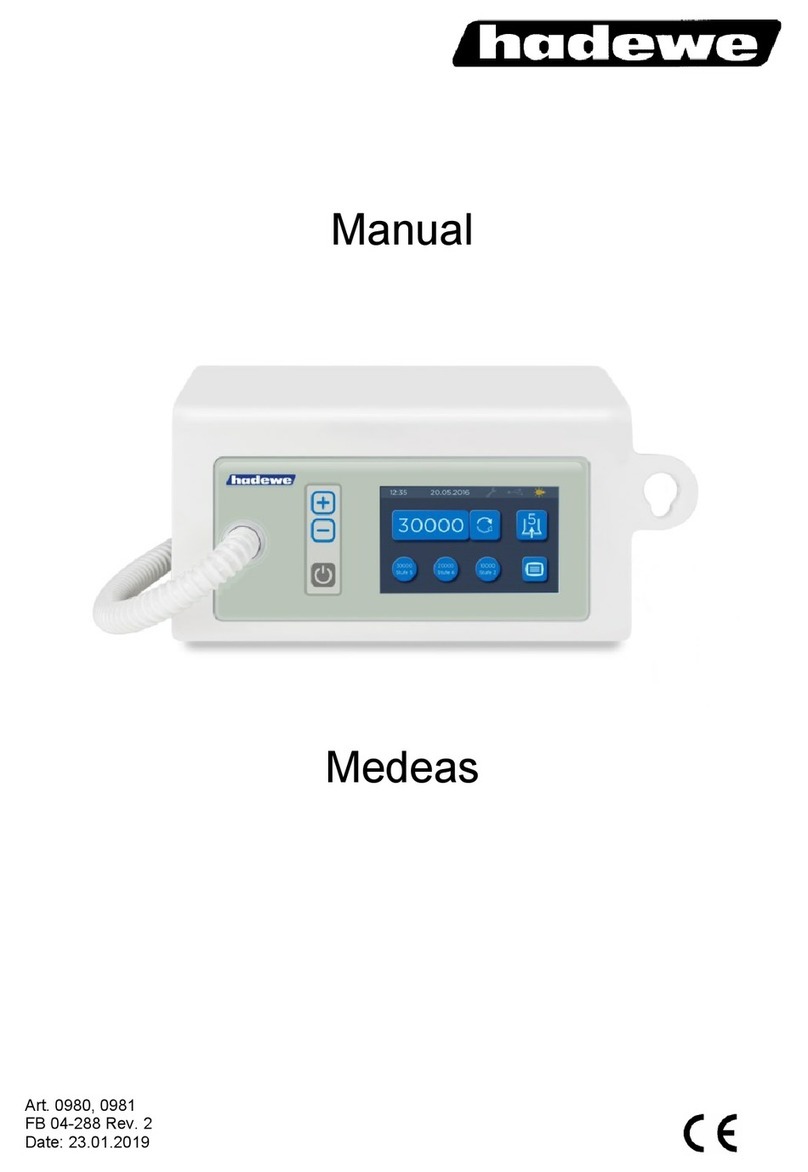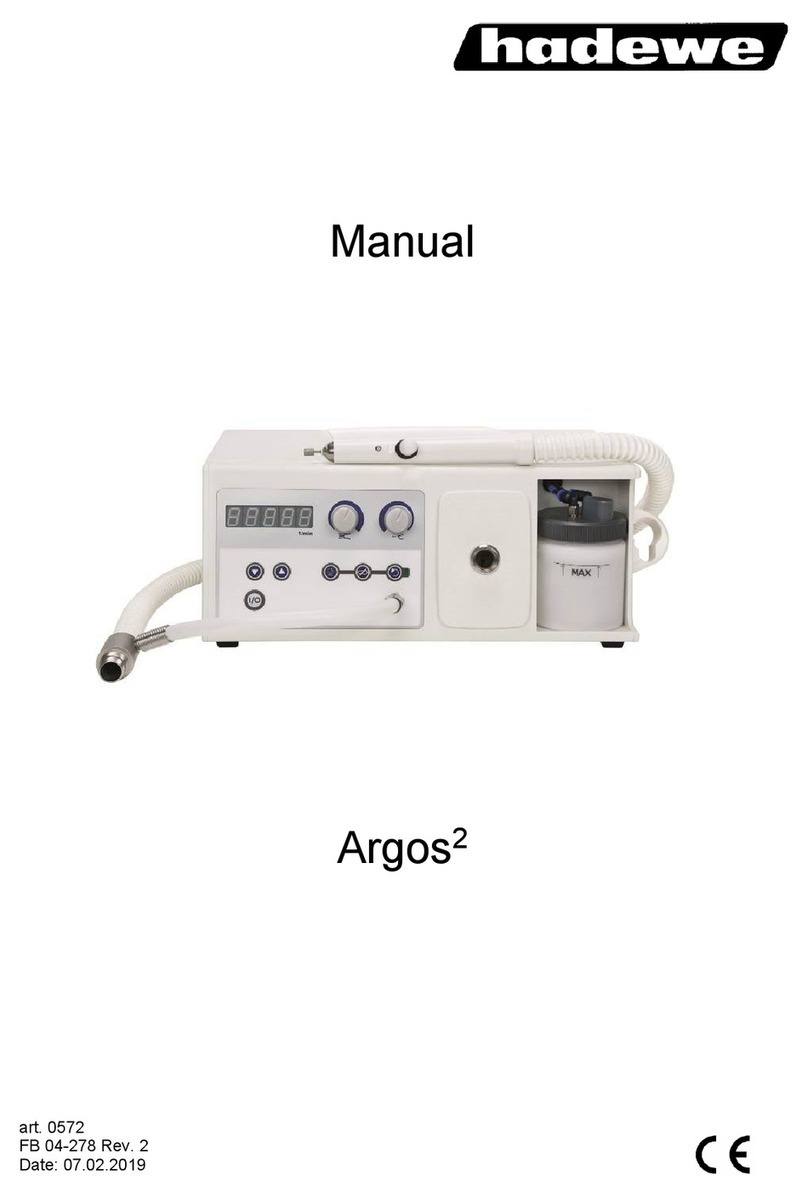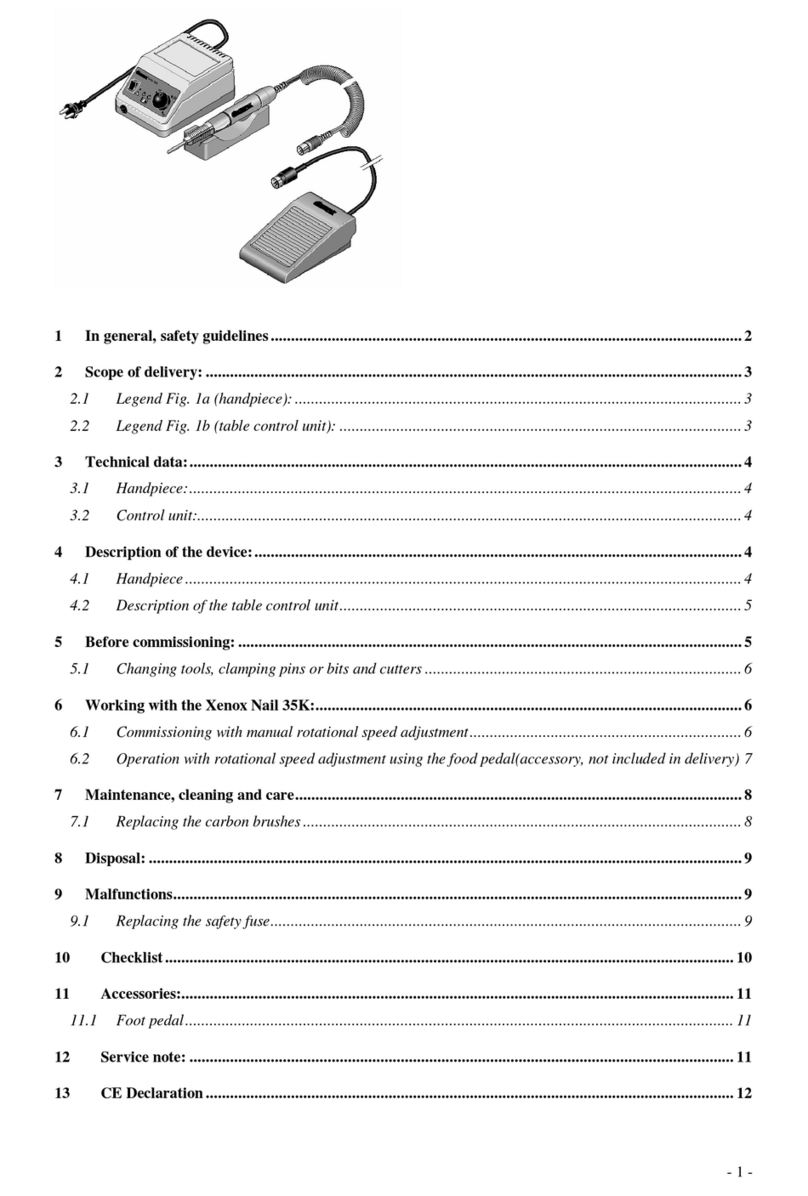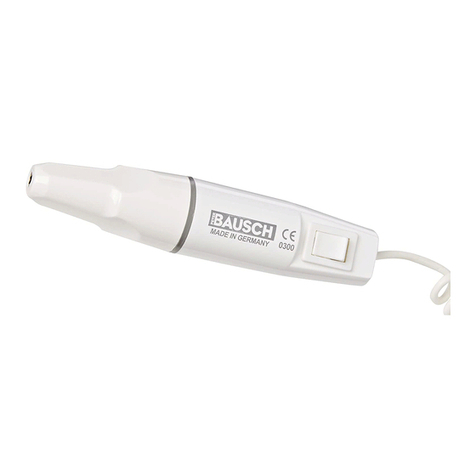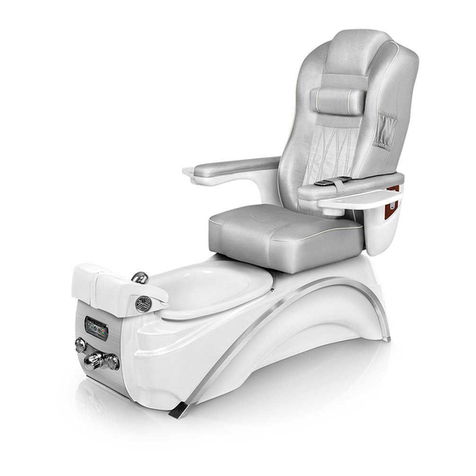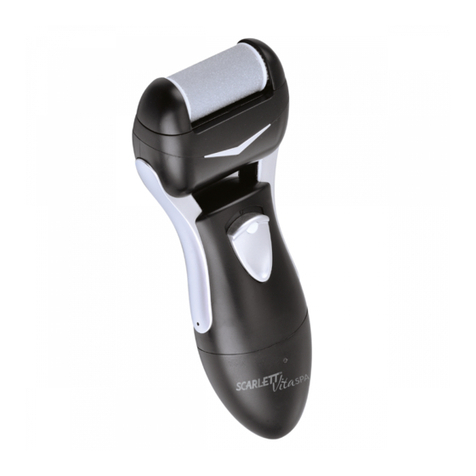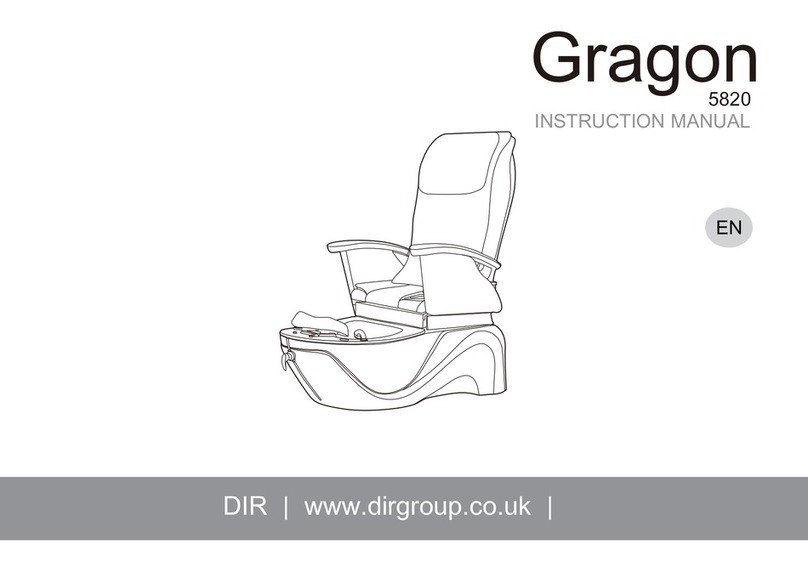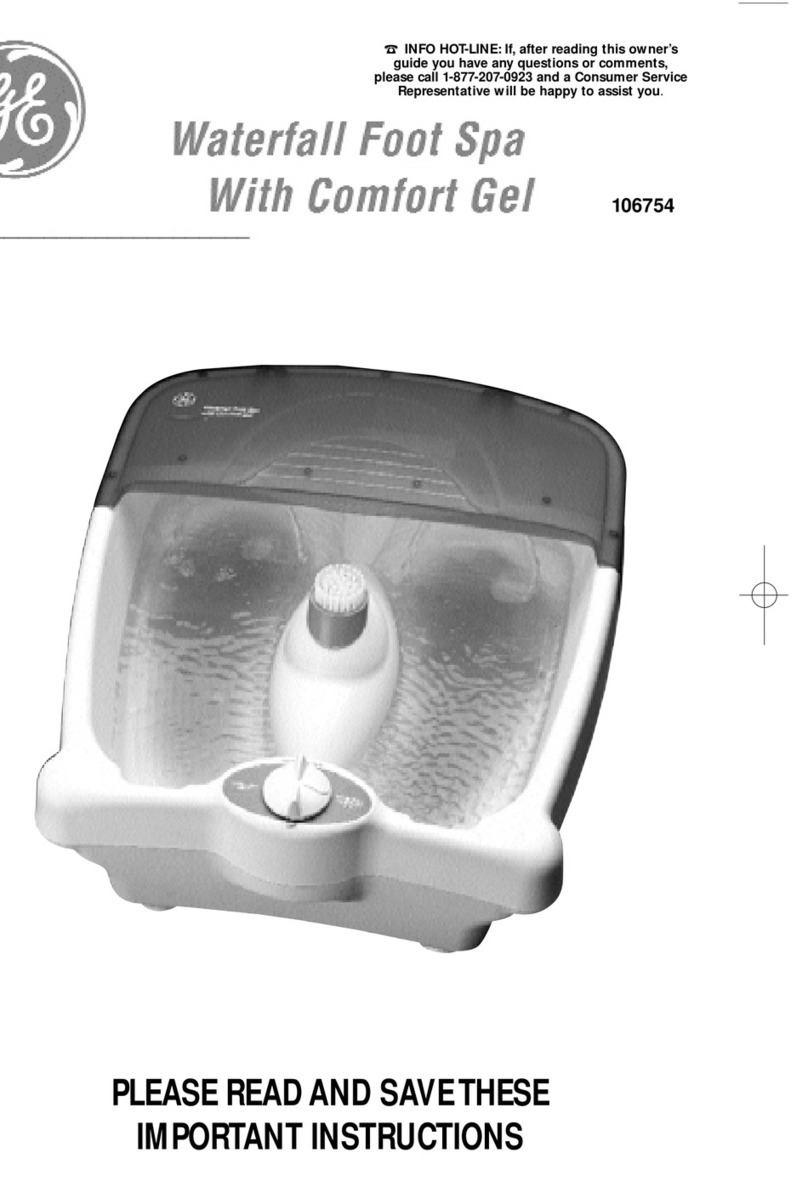The equipment should only be
used by trained operators.
The installation of the working
area has to correspond to the
relevant regulations. Set up
the unit in such a way, that the air slits
are not blocked and the extracted air
can escape well.
To avoid the risk of electrocu-
tion only connect the device to
the mains power supply.
If you pull the power plug it will
stop the connection to the
mains power supply. Set up
the unit so that the power plug is always
accessible. The power switch should
also always be easily accessible.
Only switch on the unit, if the
handpiece rests secured in the
handpiece holder, or if you
hold it safely in your hand.
Prevent any liquids from
entering into the control unit,
since this could damage the
electronic elements.
Clean the outside of the box only with a
damped cloth. Make sure, that you have
unplugged the unit before.
Only when pulling the mains
cable, you can ensure that the
device will be completely
disconnected from mains.
Check the mains cable regularly for
damages and in case of such, have it
be changed or repaired by an author-
ized service center.
Prevent your hair from
wrapping itself around moving
parts. If applicable, wear a
hair net.
When working with materials,
which might create dust or
moisture, use a drilling unit
with suction or spray tech-nique. Wear
a nose and mouth protec-tion. Always
follow the safety instruc-tions, provided
by the manufacturer of the materials
being formed and used.
For safety reasons you must
always wear disposable
gloves and protective glasses
when operating this unit. In addition, a
face mask conforming to EN 14683 type
IIR or EN 149 FFP 2 must also be worn.
Ensure that the patient’s foot
and the handpiece are held
firmly in place during the
operation. To prevend injury, work with
extreme caution on the foot of the
patient, and use only light pressure
To ensure that the bur/ tool
sits firmly in the chuck, do not
work with tools which:
•have an oily shaft
•are worn
•are bent
Before using the equipment, assure
that:
•the tool can be pushed far enough
into the chuck
•(Test this with a dipstick and clean
if necessary)

